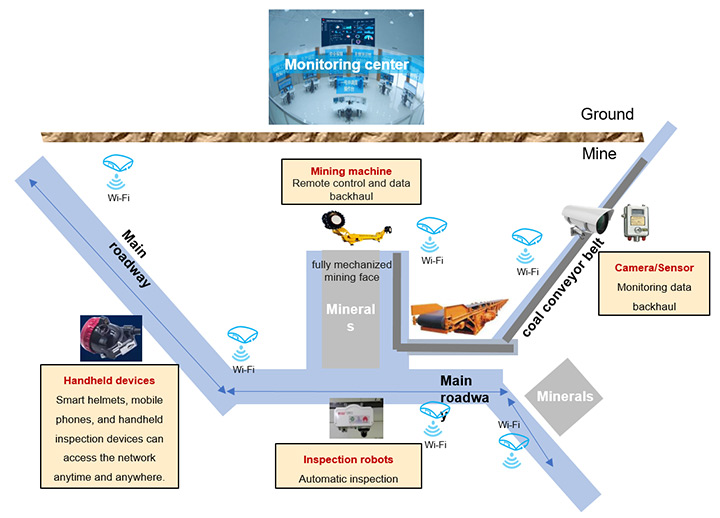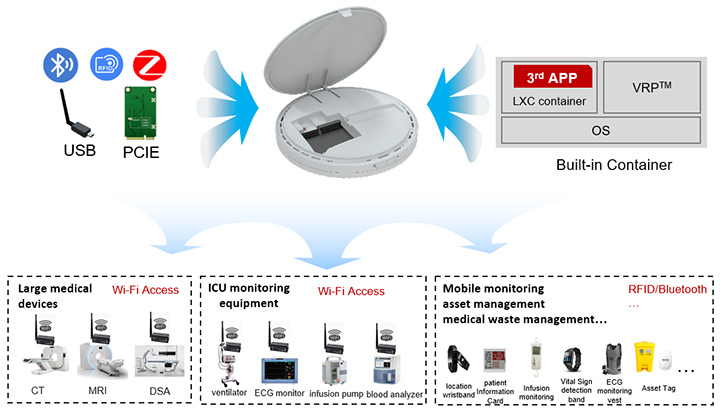This site uses cookies. By continuing to browse the site you are agreeing to our use of cookies. Read our privacy policy>
![]()
This site uses cookies. By continuing to browse the site you are agreeing to our use of cookies. Read our privacy policy>
![]()
Enterprise products, solutions & services
Enterprises of all sizes around the world are increasingly aware of the importance of Digital Transformation (DX), believing that the key to achieving DX goals is network quality. For this reason, a reliable, secure, and efficient wireless network is of paramount importance for enterprises to develop their digital business.
As the main wireless connection mode within enterprises, Wi-Fi has already played a positive role in the digital transformation of enterprises. Since Wi-Fi 6 was first put into commercial use, three years ago, this latest generation of Wi-Fi has been developing at breakneck speed. According to global market intelligence firm, the International Data Corporation (IDC), global enterprise-class Wi-Fi 6 shipments exceeded 5.5 million units in 2020, up 366% from the previous year. This figure is expected to surpass 41 million by 2025.
Indeed, Wi-Fi 6 is reshaping all industries and has proven highly valuable in office scenarios. In the manufacturing and energy industries, however, Wi-Fi 6 is unable to completely resolve every technical difficulty, including ultra-high reliability, ultra-high performance, Internet of Things (IoT) convergence, and edge control.
"Wireless is an important means for enterprise digital transformation," said Dr. Li Xing, President of the Campus Network Domain for Huawei's Data Communication Product Line. "With this in mind, Huawei launched its Wi-Fi 6 Advanced Solution, which is designed to build speedy, stable, and smart wireless networks. This innovative solution extends Wi-Fi 6 from workplaces to production environments, enabling flexible production, unstaffed factories, and little-staffed production lines."
Wi-Fi 6 is known for its large capacity, low latency, and wide connections. Going beyond these, the Wi-Fi 6 Advanced Solution takes on three new characteristics, with Artificial Intelligence (AI) and security at the core: network-wide gigabit connections, real-time intelligent control, and harmonized IoT and sensing.

The Huawei Wi-Fi 6 Advanced Solution also integrates AI capabilities into Wi-Fi technologies at scale. For example, Huawei's intelligent radio calibration technology analyzes historical network quality through big data analytics and then performs predictive optimization, across the entire network. The end result is over 50% higher network performance.
Conventional radio calibration focuses only on APs and ignores the actual terminal experience, resulting in unsatisfactory calibration results. Huawei overcomes this with the industry's only 3D radio calibration algorithm, centered on the terminal experience. This algorithm enables AI-powered 3D scenario identification and 3D radio calibration, thereby achieving network-wide optimization and improving network performance by over 20%.
AI roaming, another stand-out innovation, customizes differentiated roaming steering policies for each terminal. This ensures that each terminal can be proactively steered to the optimal AP, at the optimal time, ultimately increasing the link speed for roaming terminals by 30% and boosting the roaming success rate by 70%.
Huawei Wi-Fi 6 Advanced is a good fit for various production scenarios, from production lines in the manufacturing industry to mines in the energy industry and the Internet of Medical Things (IoMT) in healthcare. It's worth exploring these typical use cases in more detail.

Production lines in the manufacturing industry
The key to smart manufacturing is to make production lines fully wireless, including services such as Automated Optical Inspection (AOI), Programmable Logic Controller (PLC) control, Automated Guided Vehicles (AGVs), and asset management. This helps make flexible factories a reality, reducing costs and improving efficiency.
Huawei Wi-Fi 6 Advanced allows production lines to go fully wireless, paving the way for flexible production. For example, a mobile phone manufacturing enterprise has 300 production lines. To keep up with constantly evolving mobile phone models, the enterprise has to change these production lines at least once every quarter. Traditionally, production lines have mainly used wired connections and consequently have had to be suspended for at least three days for each production line change. With Huawei Wi-Fi 6 Advanced, production lines can now go fully wireless, slashing the production line suspension time to less than half a day. For our hypothetical mobile phone enterprise, this equates to 12 million more mobile phones produced over the course of a year.
In short, Huawei Wi-Fi 6 Advanced helps lead the manufacturing industry into the flexible production era, ushering in lower costs, higher efficiency, and better quality.

Mines in the energy industry
Today, mines are undergoing digital transformation and evolving toward little-staffed or even unstaffed. Networks need to be continually deployed as mining excavation progresses, which is why wireless is widely recognized as the best network solution for mines. Indeed, wireless brings an all-new experience to mining machines, inspection robots, handheld devices, cameras, sensors, and other facilities in typical mining scenarios.
With Huawei Wi-Fi 6 Advanced, mines become little-staffed or even unstaffed and benefit from lower costs, higher efficiency, and maximal production safety.

IoMT
Medical devices in the healthcare system are expensive and therefore must be used as efficiently as possible. Other priorities include improving the efficiency of patient care while reducing the workload of healthcare workers. Stating it simply, all such goals can be realized by building an IoMT network that integrates Wi-Fi and IoT.
Huawei Wi-Fi 6 Advanced greatly improves the efficiency of medical resource use as well as increasing individual medical workers' efficiency.
In summary, Wi-Fi 6 brings a fully-wireless office experience to enterprises, while Wi-Fi 6 Advanced goes a step further by extending Wi-Fi 6 to industrial production. This is made possible through Huawei's extensive range of innovative technologies and products, which effectively meet the demanding needs of production networks while further improving the fully wireless office experience.
Looking ahead, Huawei will continue to develop even more Wi-Fi 6 Advanced use cases together with all industry stakeholders, in order to help enterprises benefit from speedy, stable, and smart wireless production and office networks. Doing so, Huawei will continue to promote the digital transformation of industries, in turn improving the operating efficiency of society at large. And that's good for everyone.
Disclaimer: The views and opinions expressed in this article are those of the author and do not necessarily reflect the official policy, position, products, and technologies of Huawei Technologies Co., Ltd. If you need to learn more about the products and technologies of Huawei Technologies Co., Ltd., please visit our website at e.huawei.com or contact us.